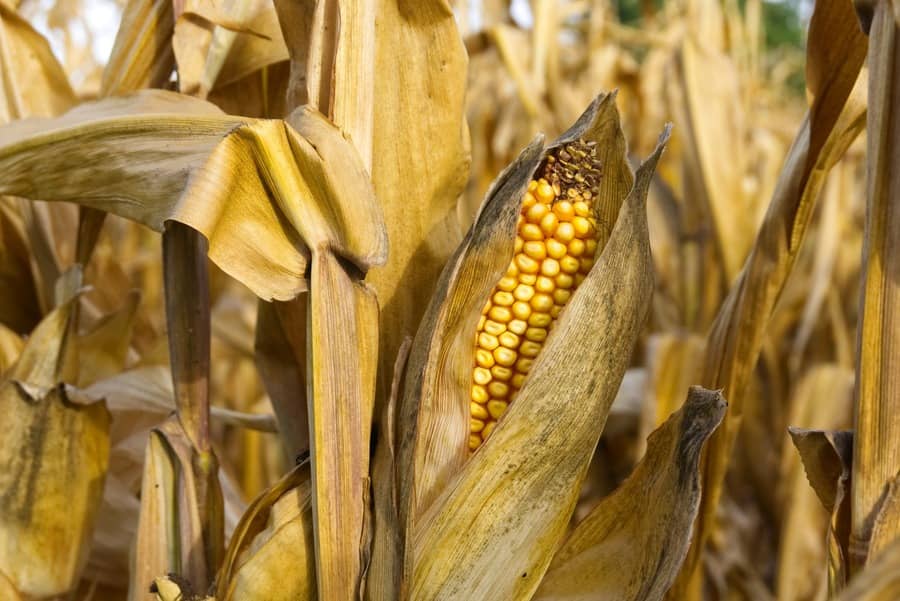Porto Alegre, September 6, 2022 – Brazilian market of corn continues with a good flow of exports. While the US crop is defined and we will have a harvest seasonality with some possible pressure on prices, the Brazilian market is closing the second crop and starting the summer planting. Good rain in the South region makes planting possible, and light frosts during the week do not change the profile of the summer crop already planted. Among all the variables present, the relevant for Brazil is the flow of exports, which is going well and maintaining the prospect for this year at 37 mln tons in shipments.
The Brazilian corn market is sustaining regional prices supported by a great export demand combined with still slow trading by growers. In the August movement, we noticed an acceleration of sales in Mato Grosso do Sul, Paraná, Mato Grosso, and Goiás due to improved regional prices. However, there is still no pressure triggered by growers caused by financial issues or because they lost expectations of a price reaction. In fact, we are entering September, still at the close of the harvest of the second crop, and warehouses and silo bags are keeping a good part of the second crop in wait for better prices.
At this point, events in the United States, Europe, and southern China can be observed, logically, as relevant points for Brazilian growers to wait for bullish movements. However, as prices improve a little internally, we notice better business flows. We must understand that the prices on the CBOT at USD 6.80/bushel for the December contract are already at a level that accounts for some losses of the US crop. It is already possible to work with the hypothesis of low stocks for the 22/23 cycle, which could bring again a tense first half of 2023 with the US and world supply, especially if Europe and China have to buy from the United States. We remind you that Brazil will not have physical volumes and space in ports to ship large volumes of corn in the first half of the year. Therefore, the first semester will serve to guide business and prices for the 2023 second crop, but not for large Brazilian exports.
Therefore, the international market is aware of this supply gap. Brazil will be able to meet world demand until January, before the soybean crop. Ukraine will be able to maintain its export profile for the first half of 2023 from the harvest of the 2022 crop from this month. Argentina will only have large volumes for sale from April onward, with the entry of the 2023 crop. Basically, the United States will continue to lead global supply and prices in the semester, and at this point there is a risk for prices on the CBOT. Could prices be back to USD 8.00/bushel levels amid a very tense market with the development of the 2023 crop? One point is inevitable: US corn will need to have competitive prices with soybeans to gain acres for planting, a framework necessary to stabilize prices from the second half of next year.
Meanwhile, Brazil must take advantage of its export window. It maintains excellent port demand for shipments until January, at the same time that we can have international purchase windows for the 2023 second crop for shipments in July and August. We have reached September with 23 mln tons committed to export shipments in 2022, with August having an excellent effective volume of 7.2 mln tons shipped over the month and 7.5 mln at Secex.
It is a rhythm that meets the target of 37 mln tons in the business year from February to January. September now has almost 6 mln tons scheduled, and there must still be some increase in volumes in this line of shipments. Between October and January, the Brazilian market will need at least 3 mln tons per month to reach this annual target, and we believe it will be easily achieved. But we cannot expect large volumes reaching February and March because of the soybean flow.
Last week, prices registered levels of BRL 90 to 94 at ports, with shipments between September and December. The profile shows that there is global demand for Brazilian corn until the end of the year. In the interior, good flow for business on the railroad in Paraná at BRL 83/85 with good volume from Mato Grosso do Sul, and in Mato Grosso between BRL 68/73 with shipments from September to December. Matopiba also has a good flow of business between BRL 75/80 depending on the time of shipment, in Maranhão and Piauí. In fact, the queue of ships for corn in Barcarena and São Luís is surprising when compared to Paranaguá and Santos.
Good rain in southern Brazil in August allows for a good condition to start planting the summer crop. Missões, in Rio Grande do Sul, and Santa Catarina already have more advanced planting but continue with strong concern over leafhopper. In other regions of the South, the planting must advance in September and early October. Soybean planting is starting in Paraguay and must advance in the earliest regions of Brazil after September 12, which greatly favors the vision for planting the 2023 second crop in the first quarter. Of course, that depends on weather conditions.
Follow the Safras Agency on our website. Also follow us on our Instagram, Twitter and SAFRAS TV and stay on top of the main agribusiness news!
Copyright 2022 – SAFRAS Latam

